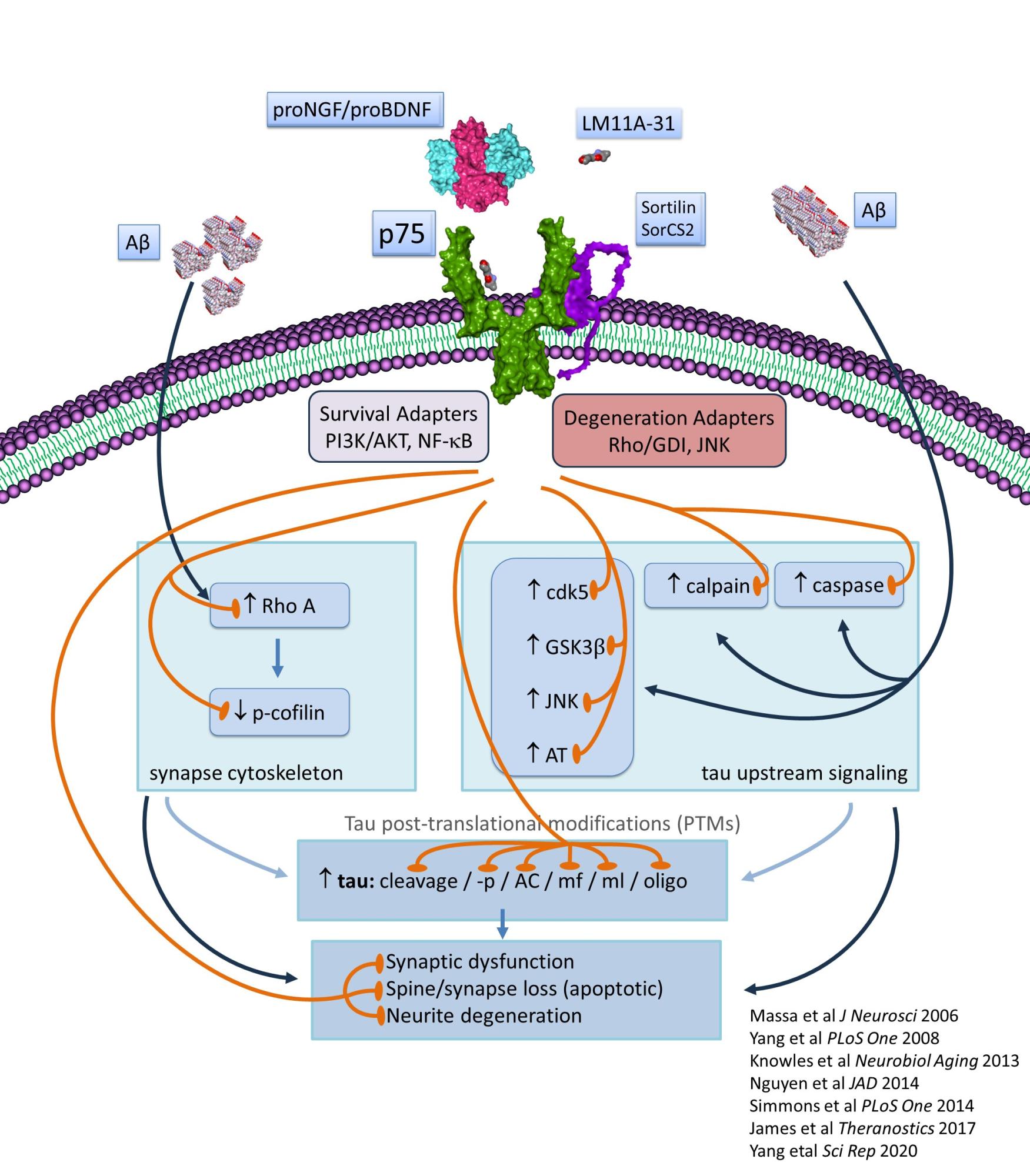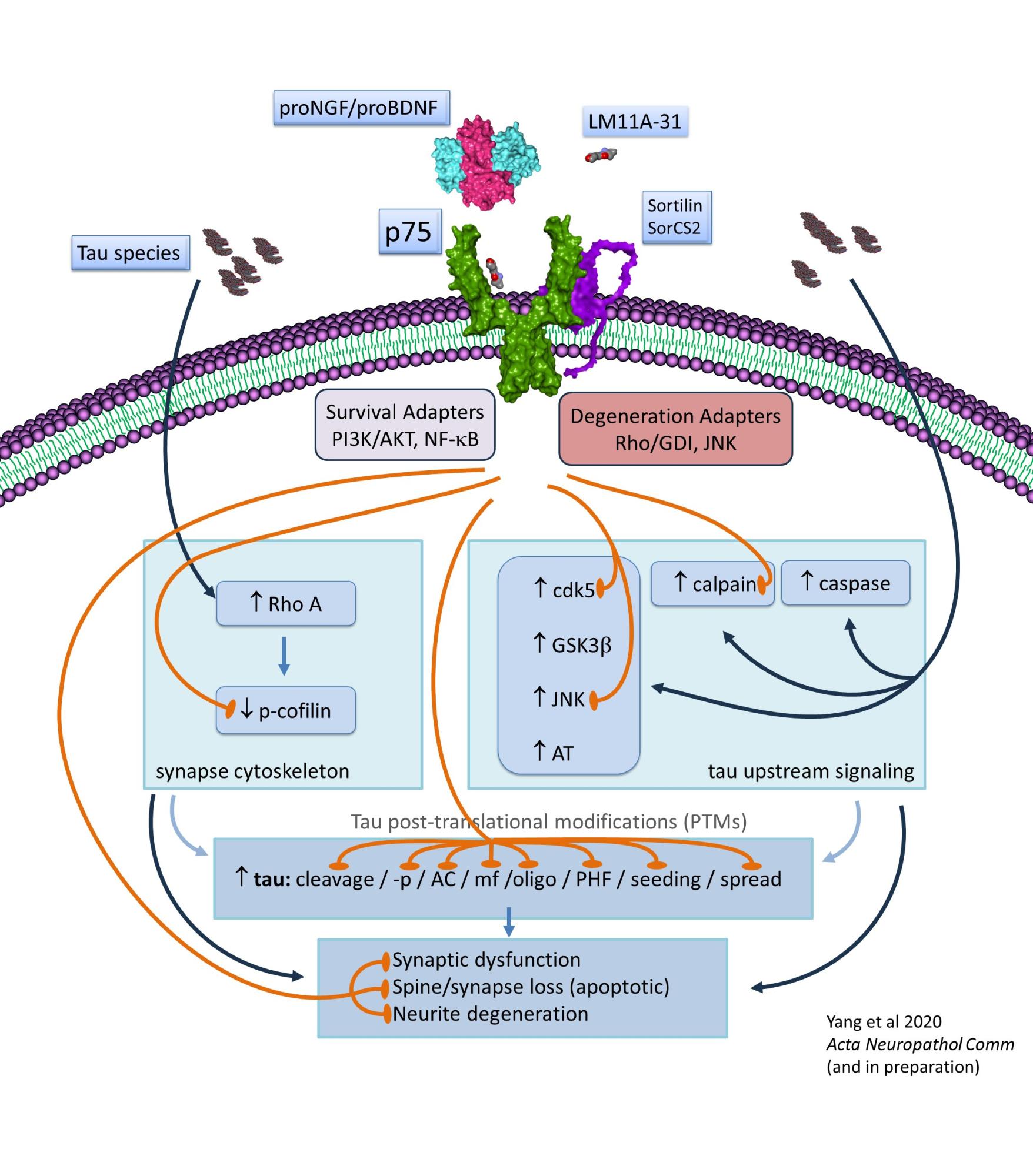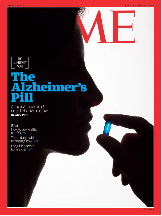P75 receptor program and Alzheimer's disease
Compounds targeting the p75 neurotrophin receptor significantly decrease degeneration of synapses and
neurons when administered to three different types of AD mice. They have also demonstrated the ability to
reverse cognitive deficits. In a study of late-stage AD mice, loss of synaptic connections was actually reversed.
In a study of aged, non-AD, normal mice, atrophy of neurons critical for memory function was reversed.
Compounds targeting p75 reverse a large number of the degenerative signaling patterns that are triggered
by amyloid and other degenerative factors and that occur in AD brain including degenerative forms of the
tau protein. The lead PTX compound targeting P75 is a modified version of compound LM11A-31. A
remarkable feature of LM11A-31 is that it is capable of penetrating the blood brain barrier, a property critical
for treating a brain disorder. Less than 1% of drug candidates are capable of penetrating the blood brain
barrier. LM11A-31 not only reaches the brain, but preferentially accumulates in brain compared to blood, a
profile that makes systemic toxicity less likely and which gives LM11A-31 a substantial competitive advantage.
A number of backup p75 compounds have also been developed. The creation of drug-type compounds that
prevent amyloid-induced toxicity; that reverse many of the degenerative patterns that occur in AD including
pathological properties of the tau protein; and that are capable of reversing neuronal degeneration in
late-stage AD mice is a relatively unique niche in the AD therapeutics field. Based on studies in mice, we
expect that LM11A-31 has the potential to delay onset of AD symptoms if administered early in the course of
degeneration prior to the onset of clinical symptoms such as memory loss; or to inhibit progression of
degeneration, if administered in later stages (mild to moderate AD).
The FDA approved an investigational new drug (IND) application for a LM11A-31-derivative in 2012 and
during 2013-2014 PTX completed a successful Phase I safety trial in normal young and elderly subjects. Phase
1 testing was supported by peer-reviewed funding from the ADDF, peer-reviewed funding by the Alzheimer's
Association's Part-the-Cloud-Program, and by private investors. In the second half of 2014, PTX will
commence its phase 2a program for LM11A-31 which will include 2a-associated preclinical safety testing and
an exploratory/biomarker study in patients with early-stage AD. In support of these studies, a private funding
round of $5.25M led by Dolby Family Ventures has been closed and a final funding round will be completed
by PTX during 2015.
With respect to other AD therapies under development, it is notable that many expect that the successful
treatment of AD will involve the concomitant administration of several medications each targeting a different
mechanism. A useful analogy is the current treatment of HIV with a 'cocktail' of three or more medications to
attain effective treatment. In AD, the majority of pharmaceutical industry and academic programs are focused
on treatments designed to lower the production or increase the clearance of amyloid, and more recently to
lower levels of toxic forms of the tau protein. If one or more of these programs is successful, and if the PTX
p75 receptor LM11A-31 program is successful, it is likely that both approaches would be applied together in
Alzheimer's treatment. This non-mutually exclusive therapeutic scenario increases the possibility of PTX
successfully becoming a part of the AD therapeutic market.



